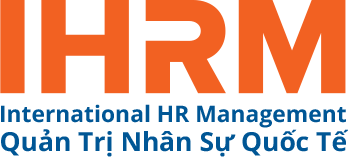6 WAYS TO SUPPORT YOUR WORKFORCE THROUGH TIMES OF UNCERTAINTY
Be it a natural disaster or global health concerns, your organization is bound to encounter some unexpected external circumstances. It’s not always easy to keep your business running smoothly during these trying times—especially when crises are dominating headlines—but it’s up to HR to ensure employees remain motivated and reassured.
So what can you do to help reassure your people, when so often they look to you for knowledge, advice and expertise on such topics? Here are a few ways to support your workforce during times of uncertainty.

Transparent communication is especially important when dealing with unforeseen circumstances because it empowers organizations to build trust and gain respect from employees.
(Photo: freepik.com)
1. PLAN FOR SPECIFIC SCENARIOS BEFORE THEY HAPPEN
HR professionals can’t predict the future but they can have a plan ready to go when employees and managers look to them for answers on how to navigate these difficult situations.
Contingency planning also means preparing for unlikely and potentially frightening events, like natural disasters and widespread illnesses. In the case of the former, it may be worth conducting training that helps workers know what to do if, say, an earthquake hits or tornado strikes (e.g., how to evacuate, where to seek shelter, etc.). You might also take proactive measures to purchase office rental insurance or move all paper files onto the cloud. Meanwhile, for health-specific cases, contingency plans might include rethinking how your business operates if employees need to work remotely for an extended period of time to limit risks. Conducting a “trial run” of sorts can ensure employees have the tools they need to work from home effectively. That way, if and when the time comes when they must avoid going into the office, they are prepared to continue working effectively from home. It will also be important to develop a plan for these employees who need to quarantine themselves. Brainstorm ways to keep them feeling engaged in their work and included on the team.
2. COMMUNICATE WITH WORKERS EARLY AND OFTEN
As employee expectations continue to change, organizations are placing increased emphasis on transparency. Many companies are sharing information that was once considered confidential with their employees, from business financials to data around diversity and inclusion. Communicating with transparency shows employees you value them and want to keep them updated on what’s happening across the organization.
Transparent communication is especially important when dealing with unforeseen circumstances because it empowers organizations to build trust and gain respect from employees.
Telling your staff how and why you’re making certain decisions or taking specific actions will give them peace of mind that HR is there to protect them—whatever the circumstances may be. Prepare ahead of time so you are not scrambling when everyone is looking to you for answers. Most of what you would need to communicate can be preplanned so that you are only making minor adjustments when you need to act.
But it’s not just HR that must communicate with employees—it’s also imperative that managers and leads are comfortable speaking with their teams about these issues. Train managers on how they can effectively communicate these various scenarios to employees.
3. LEAD BY EXAMPLE
HR leaders and C-level executives set the tone for the company from the top down. For organizations to succeed, senior leaders need to practice what they preach. Executives who fail to lead by example will leave workers confused about how they should act.
For example, if you advise staff to put their health first by avoiding unnecessary business travel, but then ignore your own advice by boarding a plane across the country for a conference a few days later, you will likely send a mixed message.
4. ALLOW FOR MORE FLEXIBILITY
There has been a growing trend towards flexible work schedules over the last decade. This benefit not only helps employees successfully manage their work-life balance, from cutting down commute times to ensuring working parents can pick their kids up from school, it also provides employees with the support they need during times of uncertainty.
Consider scenarios where employees may be uncomfortable working in close proximity to their colleagues who have traveled, even domestically, or attended conferences, concerts or other large gatherings of people. Allowing fearful employees to work from home will help them to be more productive and focus on their surroundings.
5. OFFER LEARNING COURSES ON RELEVANT TOPICS
Of course, uncertain circumstances often require employees to make some adjustments to their day-to-day schedules, and it’s up to HR to provide them with the tools they need to carry on with their regular tasks. Learning and development programs that are accessible from anywhere can give employees the guidance they need to continue to thrive on the job.
6. READJUST YOUR GOALS
In times like these, it’s important to understand that change is inevitable. Instead of attempting to minimize issues that are beyond your control, embrace these challenges by adjusting your organizational goals accordingly. Encourage employees and managers to be adaptable and be there to support and guide them along the way. Be sure to also apply these adjustments to other stakeholders, such as customers or suppliers. For example, be open to rescheduling client meetings where travel is required. Consider hosting purposeful and engaging virtual meetings instead.
Making these adjustments isn’t always easy—and it might take some time. But by providing the necessary resources and support across your organization, employees will be able to navigate whatever changes may come their way.
Source: www.cornerstoneondemand.com
|
Internationalize the human resource management capabilities of HR professionals in Vietnam |











